Poems on the Underground archive arrives at Cambridge University Library
Donated archive holds correspondence of Nobel Prize-winning poets and Scotland’s Makar Edwin Morgan
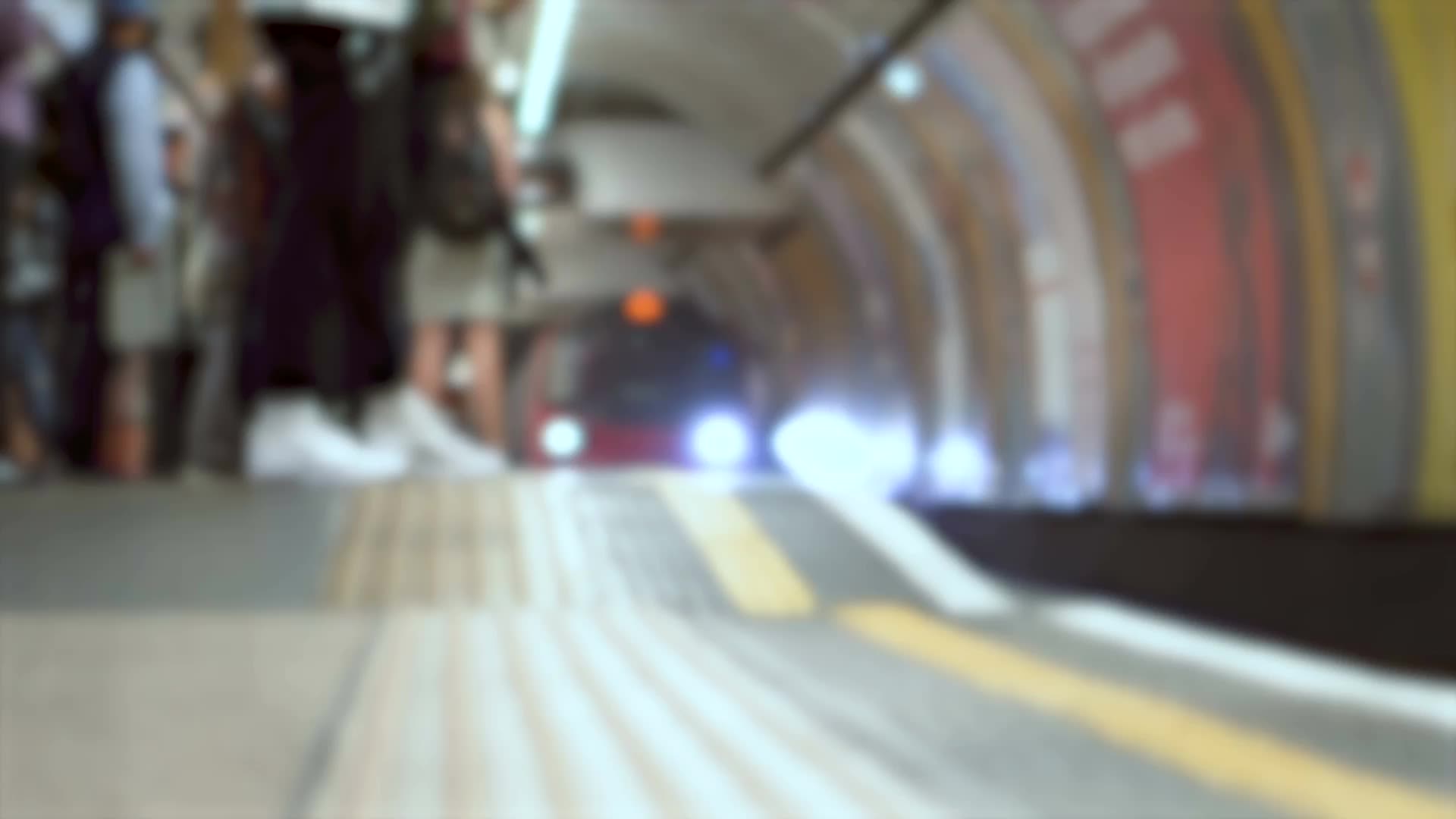
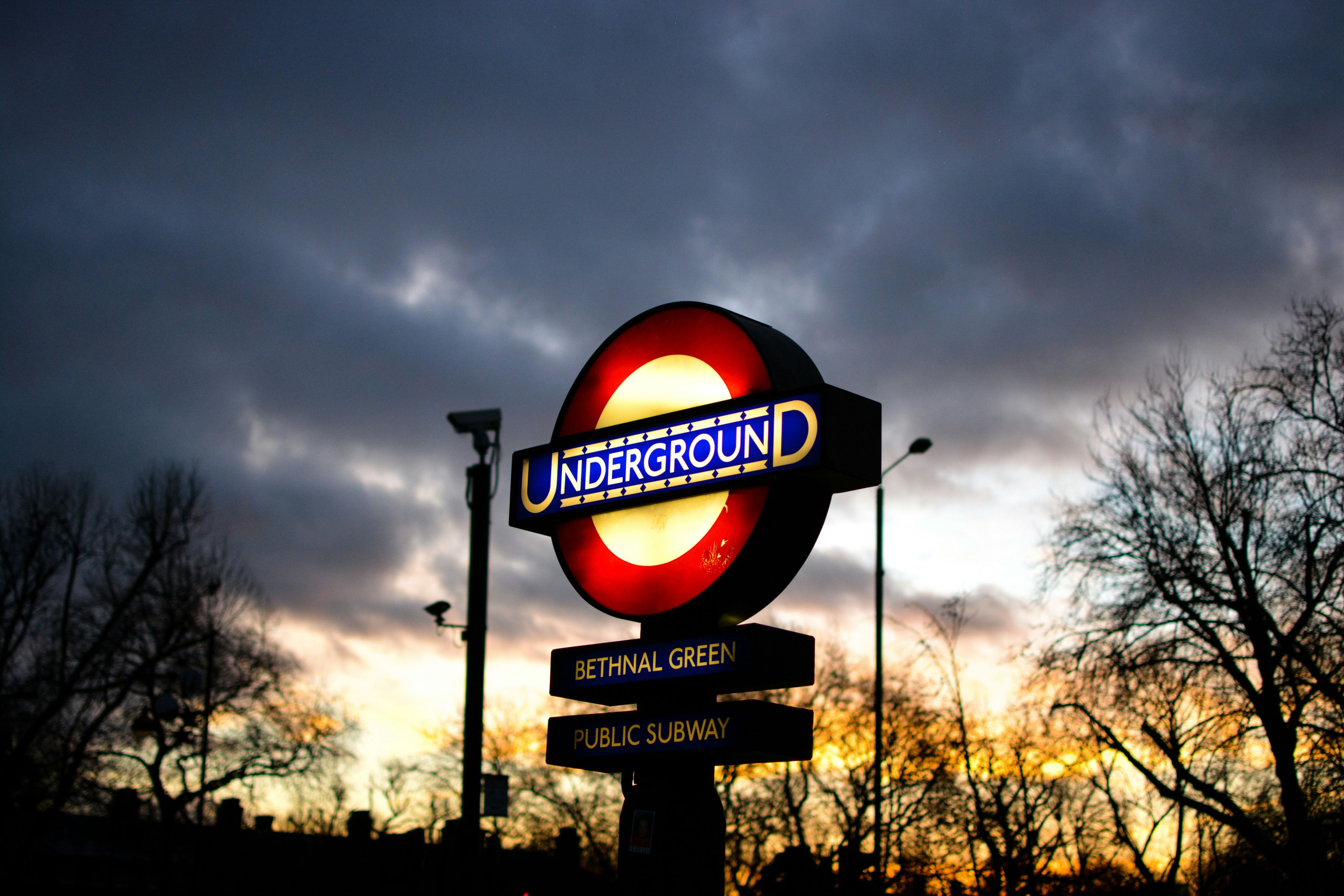
Photo by Nick van den Berg on Unsplash
Photo by Nick van den Berg on Unsplash
Poems on the Underground has delighted millions of commuters, tourists and Londoners since the first posters appeared on the Tube in 1986.
Now, the archive of this beloved literary project – which includes hundreds of posters, eclectic memorabilia and letters from some of the greatest poets of the past century – has been donated to Cambridge University Library, home to the archives of Siegfried Sassoon, Anne Stevenson and other renowned poets.
Among the letters to organisers of the Poems on the Underground project – initially conceived and brought to life by writers Judith Chernaik, Gerard Benson and Cicely Herbert, and now co-directed by Chernaik, Imtiaz Dharker and George Szirtes – are missives from Nobel Prize winners Seamus Heaney and Louise Glück, former Poet Laureate Carol Ann Duffy, and Philip Larkin, among many other famous names from the world of poetry.
News of the archive’s donation to Cambridge is announced on the day of publication for the 116th set of poems, featuring works by Byron, Emily Bronte and contemporary British and Irish poets.
Since its launch, Poems on the Underground has become one of Britain’s most successful public art projects, highlighting classical, contemporary and international work by both Nobel and Pulitzer Prize-winning writers as well as relatively unknown poets, and has inspired similar schemes in cities around the world, from New York to Shanghai.
Among the archive material at Cambridge is a 1985 letter from Philip Larkin, the year before the project got off the ground (or went Underground), detailing his enthusiasm for the scheme while striking a sadly poignant and prophetic tone for his wish to see his and others’ poetry in place on the Tube.
“I am glad your project is being favourably regarded,” wrote Larkin in a letter dictated due to failing health on July 26, 1985. “It makes me wonder whether I shall ever actually see one of the poems in the proposed location.”
Sadly, Larkin died in December 1985 and did not live long enough to see his poem The Trees take its place on the Tube in 1986 – the year Poems on the Underground were first unveiled to the commuting public.
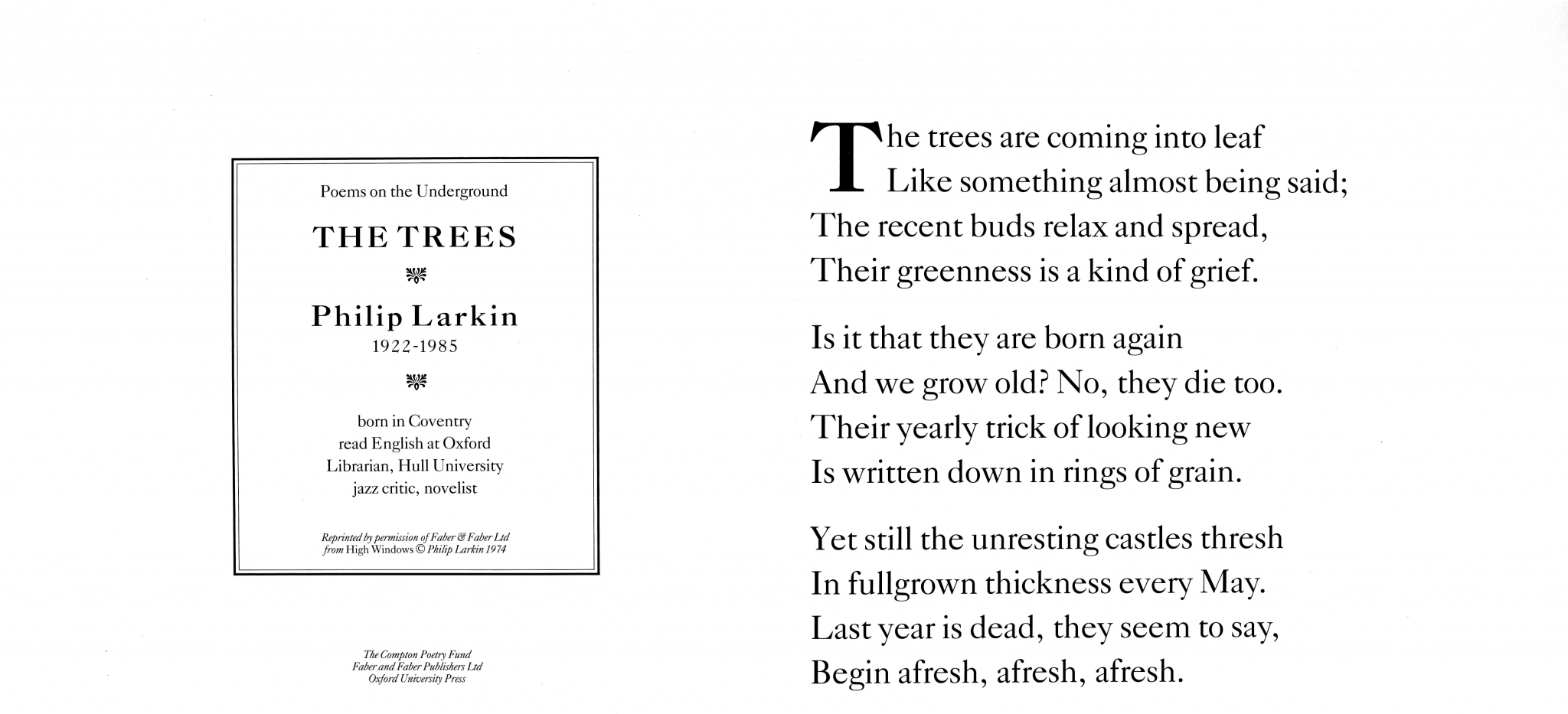
The original 1986 Poems on the Underground poster of Philip Larkin's The Trees.
The original 1986 Poems on the Underground poster of Philip Larkin's The Trees.
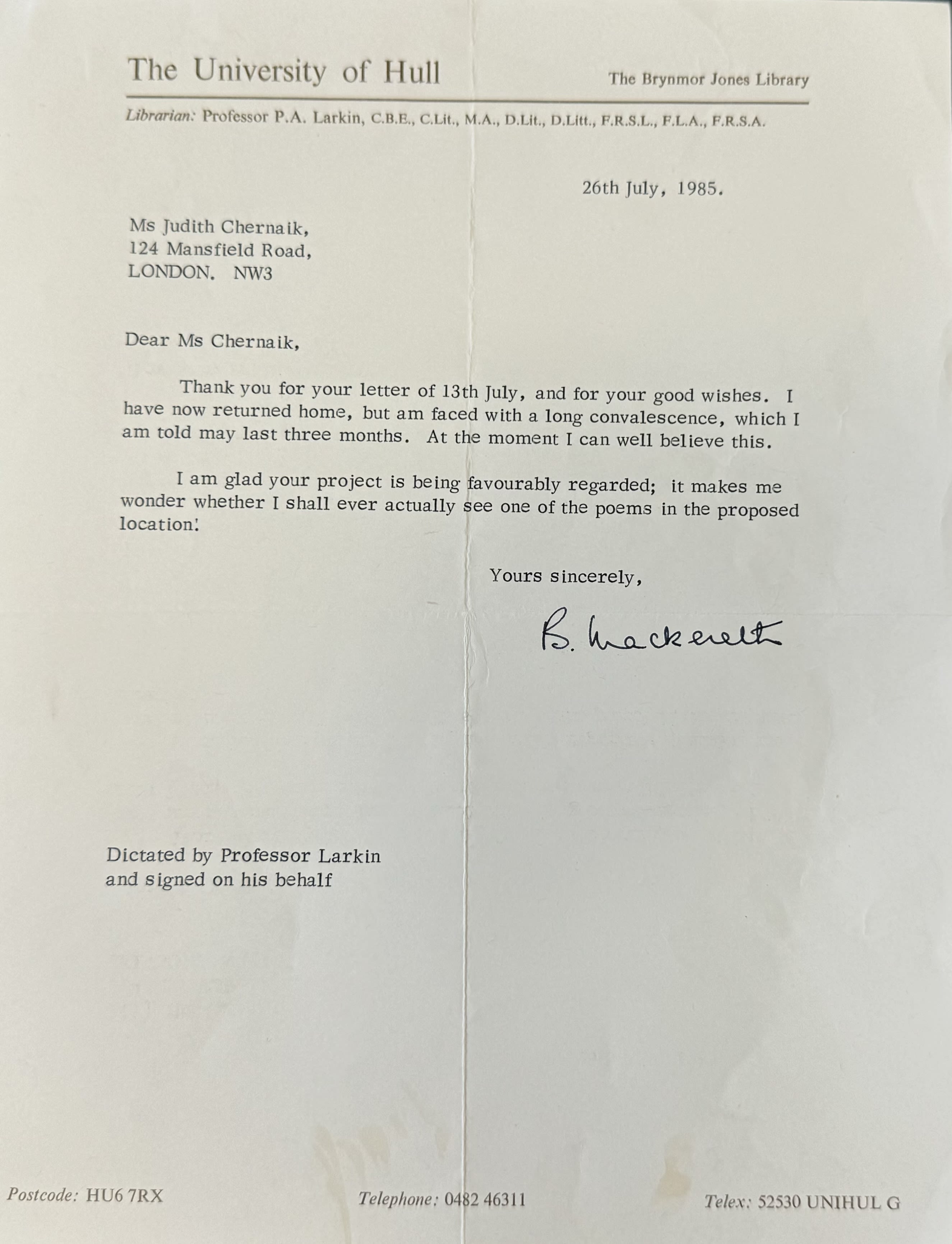
Larkin's dictated letter to the project in 1985 is now part of the archive at Cambridge.
Larkin's dictated letter to the project in 1985 is now part of the archive at Cambridge.
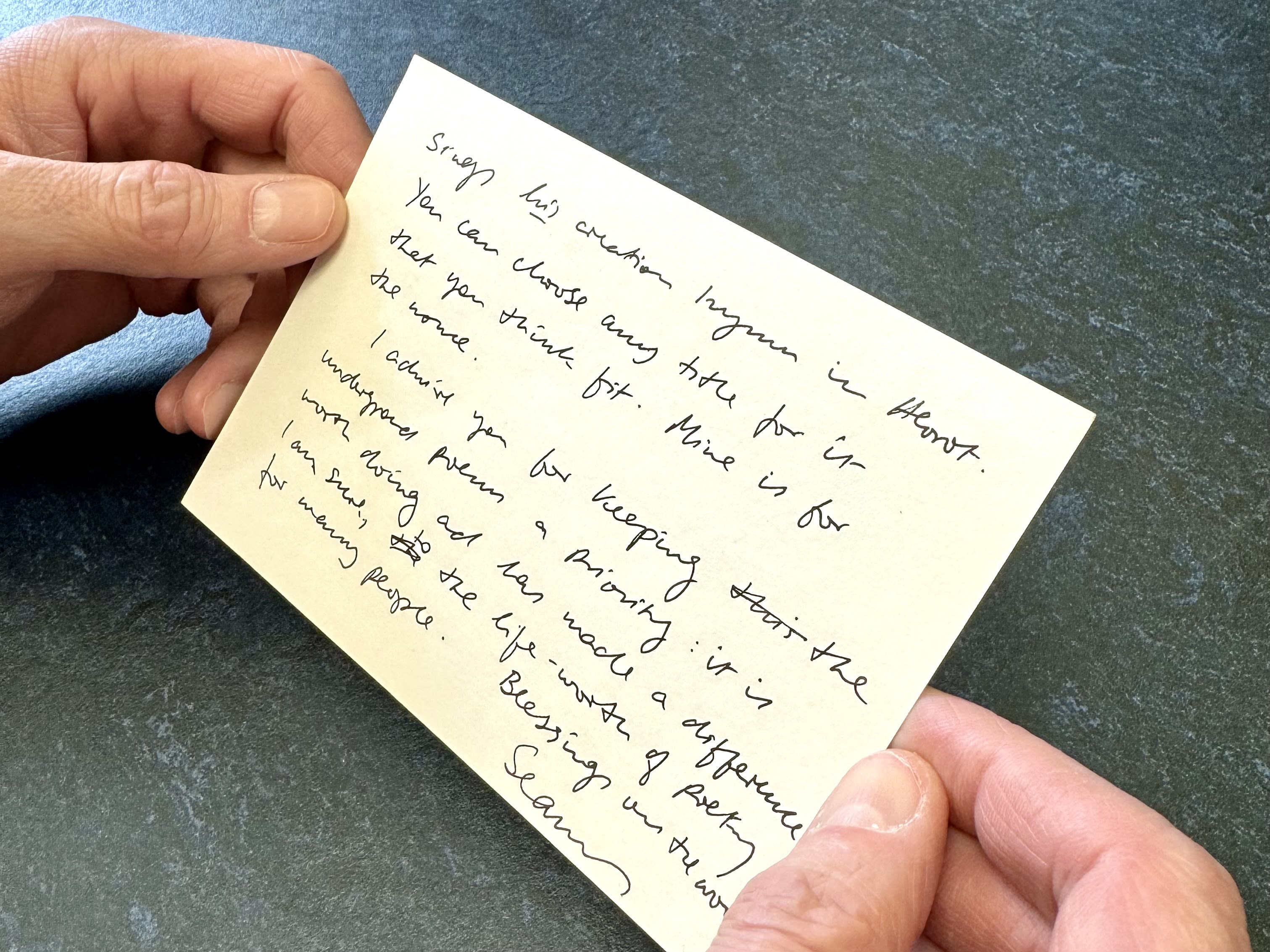
The note from Heaney to Chernaik expressing his admiration for the project.
The note from Heaney to Chernaik expressing his admiration for the project.
In a card to Judith Chernaik dated May 8, 1999, Seamus Heaney wrote: “I admire you for keeping the underground poems a priority: it is worth doing and has made a difference, I am sure, to the life-worth of poetry for many people. Blessings on the work.”
Heaney’s poem The Railway Children was included in the very first set of Poems on the Underground posters, in January 1986; and to date, eight poems and translations by Heaney have appeared on posters across the London Underground.
Many of the contributing poets wrote of their pleasure at seeing their poems in the Tube carriages.
Anne Stevenson was one of several to thank Chernaik for sending posters: “I shall try to find a way of framing all three for my kitchen wall – to cheer me while I toil.”
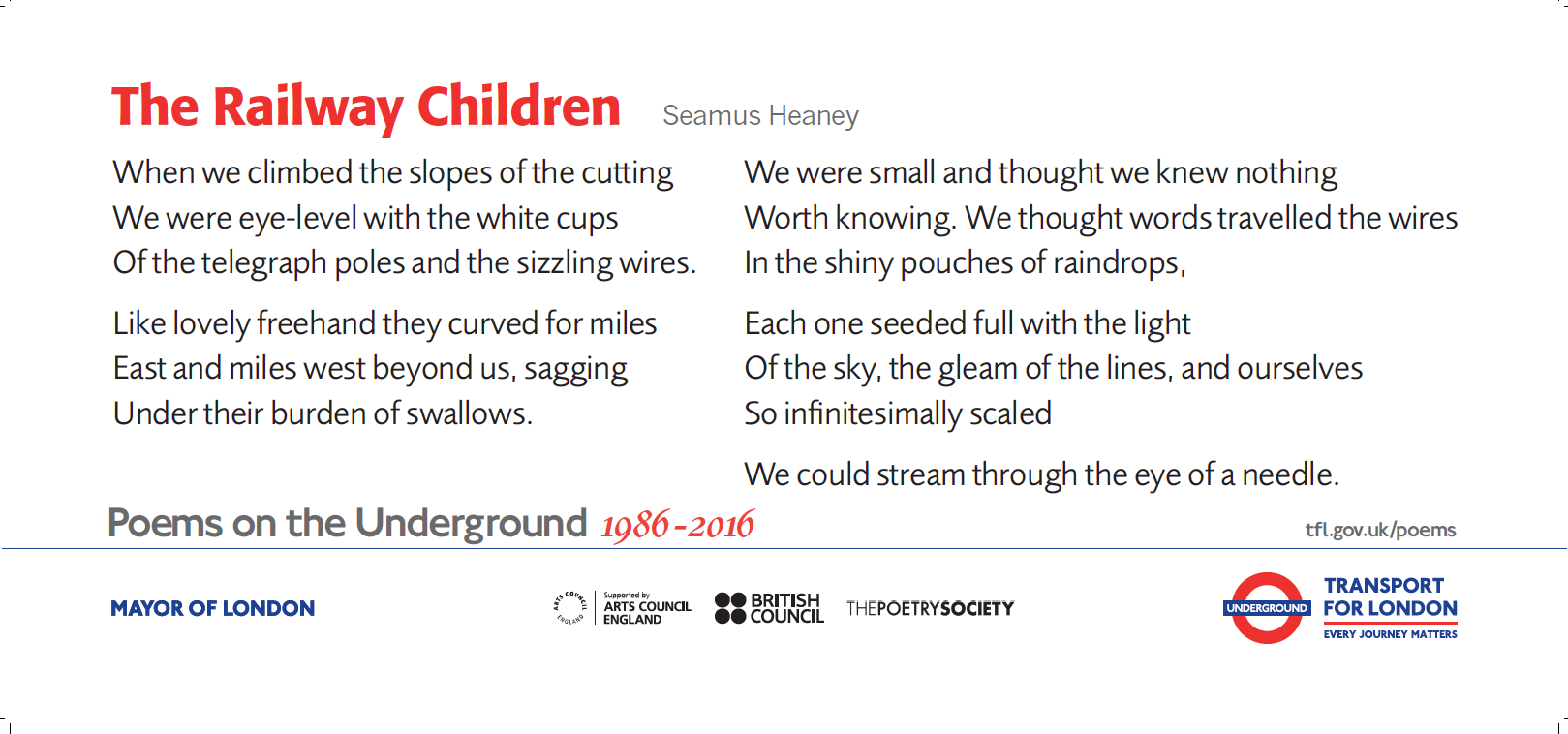
The 30th anniversary of Poems on the Underground saw Heaney's The Railway Children posted on the Tube once more. Credit: Poems on the Underground/TFL.
The 30th anniversary of Poems on the Underground saw Heaney's The Railway Children posted on the Tube once more. Credit: Poems on the Underground/TFL.
John Wells, Senior Archivist at Cambridge University Library, said: "This wonderful archive highlights the whole range of activities sponsored by Poems on the Underground – not just the well-known poetry posters in Tube carriages, but also readings, concerts and book publications.
"The letters from poets are backed up by correspondence from prominent supporters from political and cultural life, such as Michael Foot, Glenda Jackson and Matthew Parris.
"There is a strong international element: many poets from beyond the UK are represented; the project frequently highlighted the international range of poetry (Chinese Poems on the Underground, Polish Poems on the Underground, Irish Poems on the Underground, etc.); and there are papers relating to poetry on public transport systems around the world inspired by and modelled on Poems on the Underground."
“It is hugely gratifying to know that our archive is now housed and catalogued at one of the greatest libraries of the world, fully available to readers and researchers, to everyone interested in public space for the arts and in poets past and present – the most eloquent and enduring witnesses to their times.”
Judith Chernaik
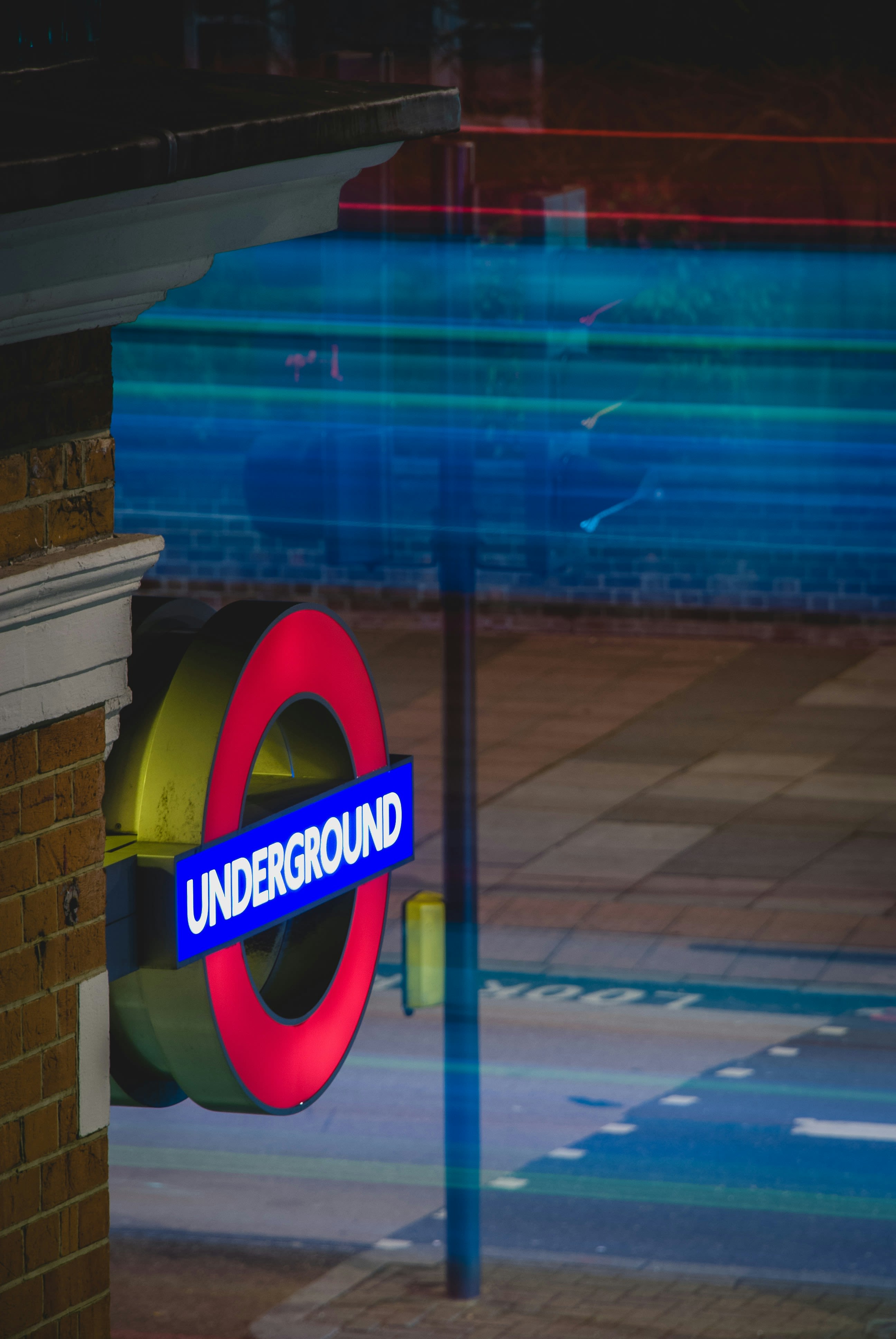
"When I saw my first Poem on the Underground decades ago, I was so taken with the poem and the idea of reading it on an underground carriage that I missed my stop.
"It was only years later, when my own poem went up on the underground, that I understood the drive behind it: an absolute belief in the necessity of poetry, its power in the places where we live and travel every day.
"Now Judith, George Szirtes and I have the joyous task of choosing poems from all over the world, from poets who are alive or long gone, known or unknown.
“That first poem I read on the underground was Siegfried Sassoon's Everyone Sang. To me it feels especially right that the Poems on the Underground archive is now with Cambridge University Library, which also holds the archives of Sassoon and many other great poets.”
Imtiaz Dharker
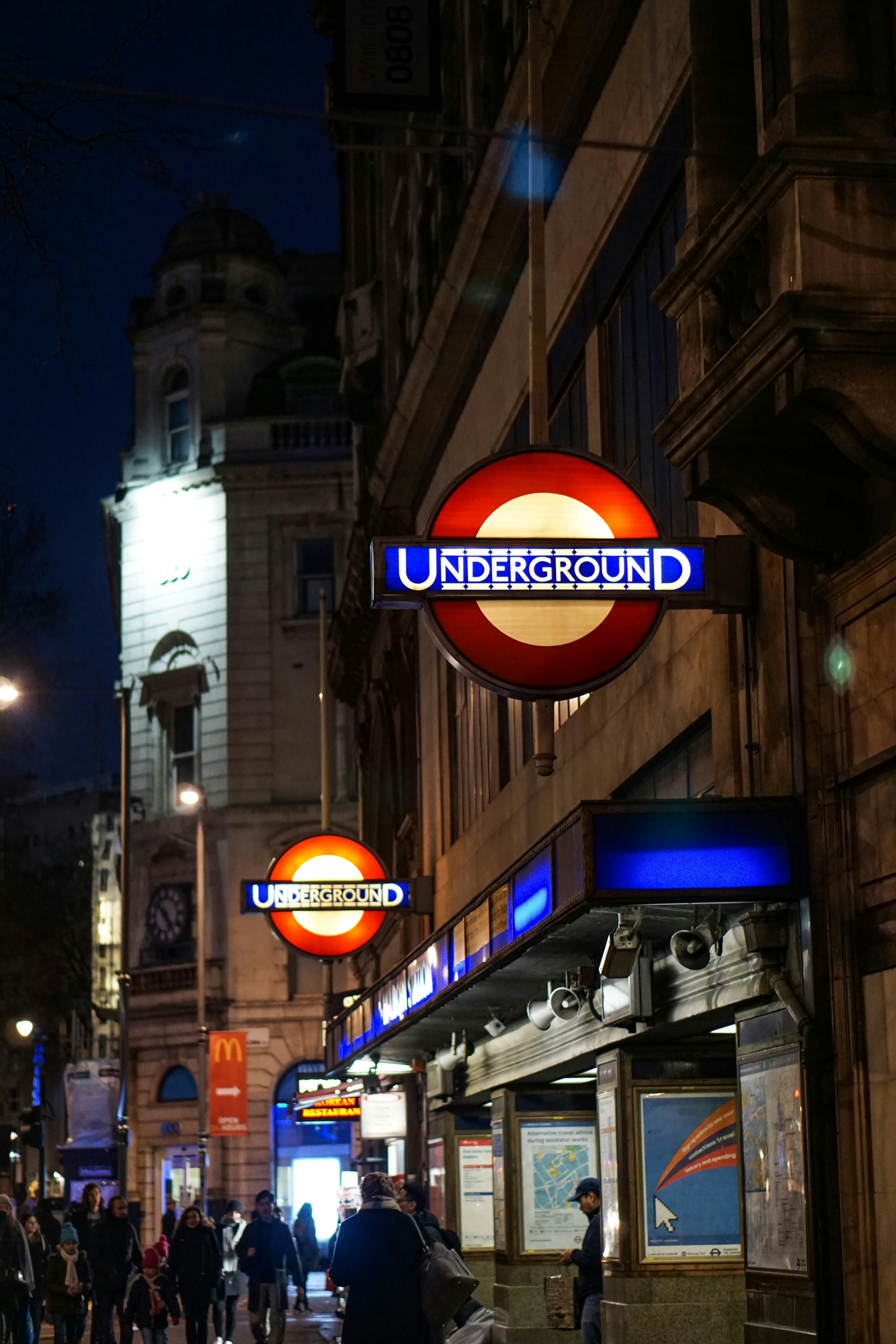
Photo by Tom Wheatley on Unsplash
Photo by Tom Wheatley on Unsplash
"Poems on the Underground seemed a wonderful idea. But I did not expect my own work to appear there, while thinking that it must be a tremendous honour to be read by so many people in such a public place.
"When my first poem did appear on the Underground it was indeed a tremendous honour I still cherish. And it is wonderful, and also an honour, to be involved in selecting poems by poets of all ages, from all places, to put before travellers today.”
George Szirtes
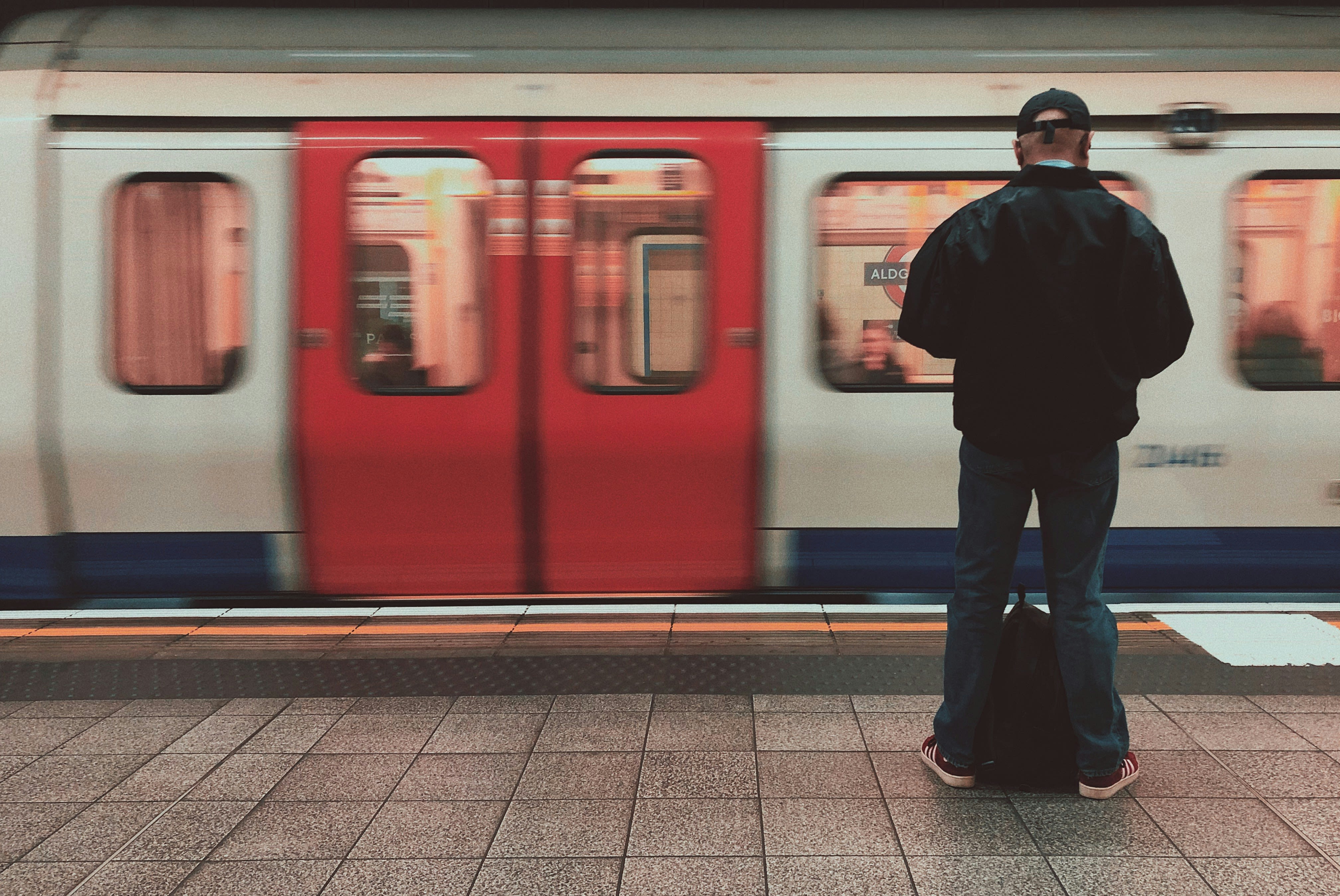
The Poems on the Underground archive supplements Cambridge University Library’s growing archive and manuscript holdings relating to contemporary poetry.
The Library is home to the literary archives of poets as varied as Charles Tomlinson, George Szirtes, Ruth Padel, J. H. Prynne and Joanne Limburg, as well as writers in other genres such as novelists Dame Margaret Drabble and Sir Wilson Harris.
Emma Strain, TfL’s Customer Director, said: “Poems on the Underground has been going for almost 40 years now, making for a rich and varied collection of poems going into the prestigious Cambridge archive.
"We know the poems will delight and inspire visitors to the archive as much they do on our customers on our trains as they travel across London, and we hope our customers enjoy the latest set of poems launching on our network celebrating love in all its guises.”
The Poems on the Underground collection has been catalogued and is available for consultation at the Library by anyone interested in seeing it. Poems from the collection are also part of the holdings at the London Transport Museum and the Poetry Library at the Southbank Centre in Waterloo, London.
Poems on the Underground is supported by TfL, Arts Council England and The British Council.
The original posters from 1986 onwards can be accessed at: www.poemsontheunderground.org
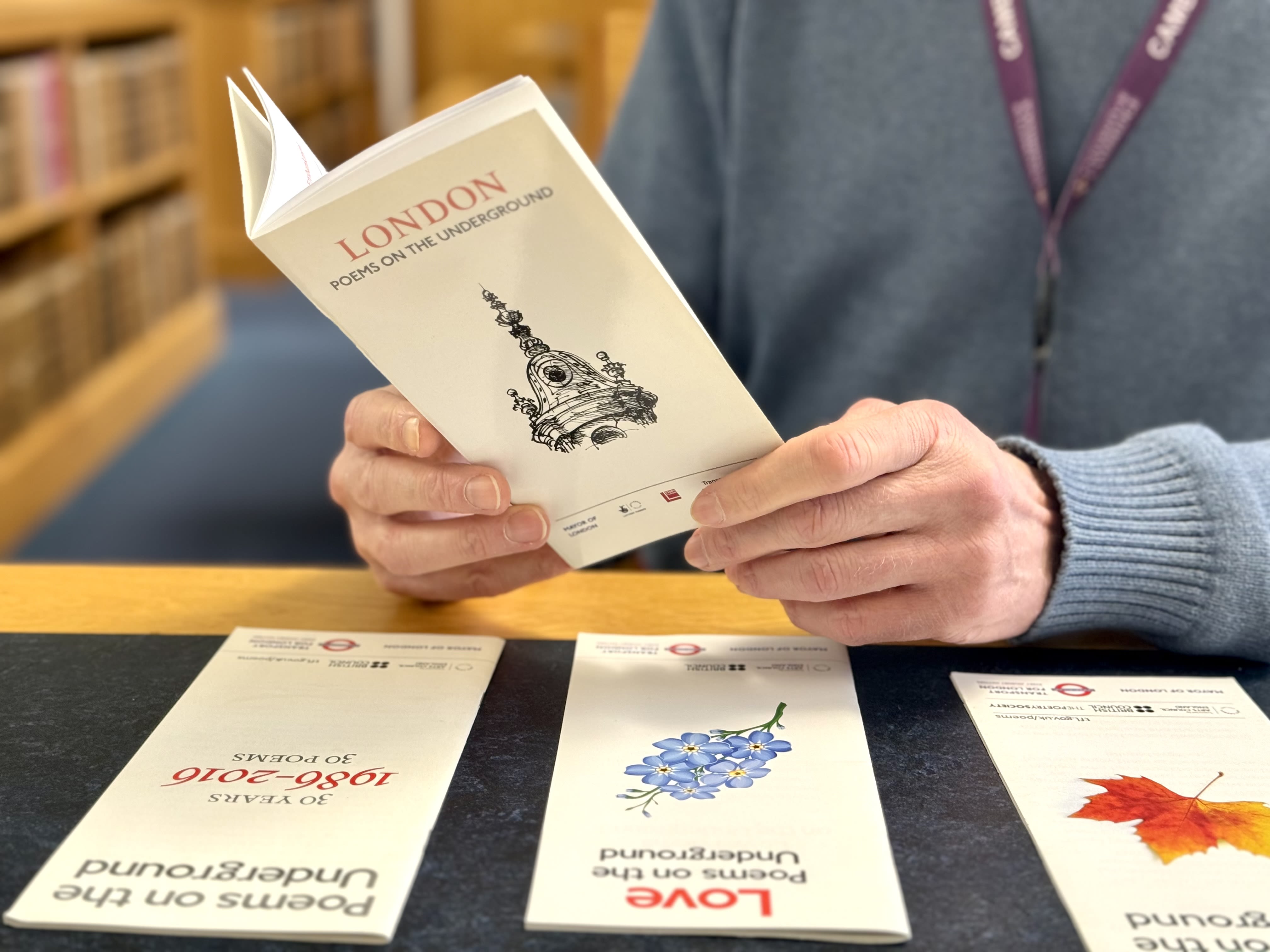
Some of the archive collection pictured in situ at Cambridge University Library.
Some of the archive collection pictured in situ at Cambridge University Library.
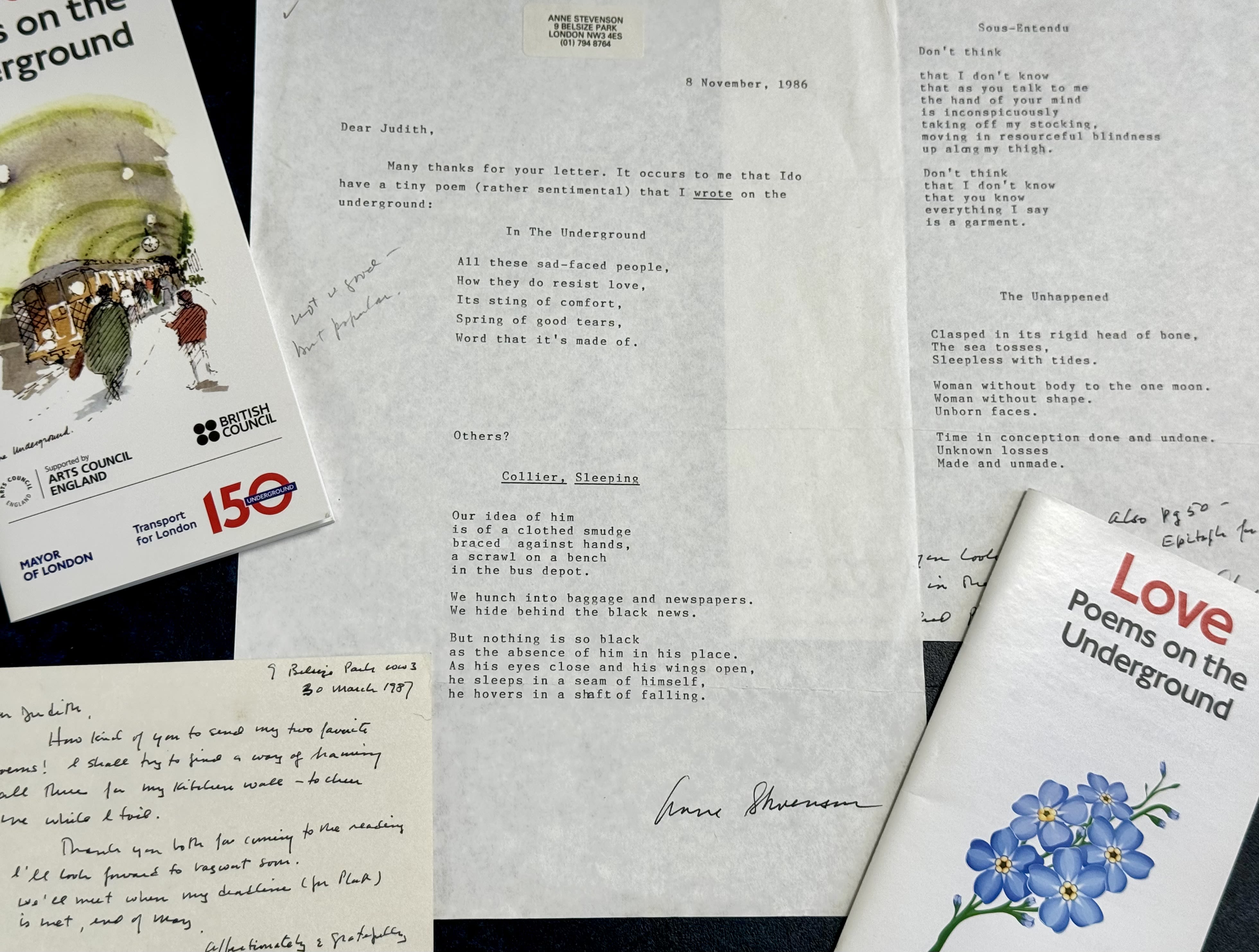
Some of the archive collection pictured at Cambridge University Library following its donation.
Some of the archive collection pictured at Cambridge University Library following its donation.
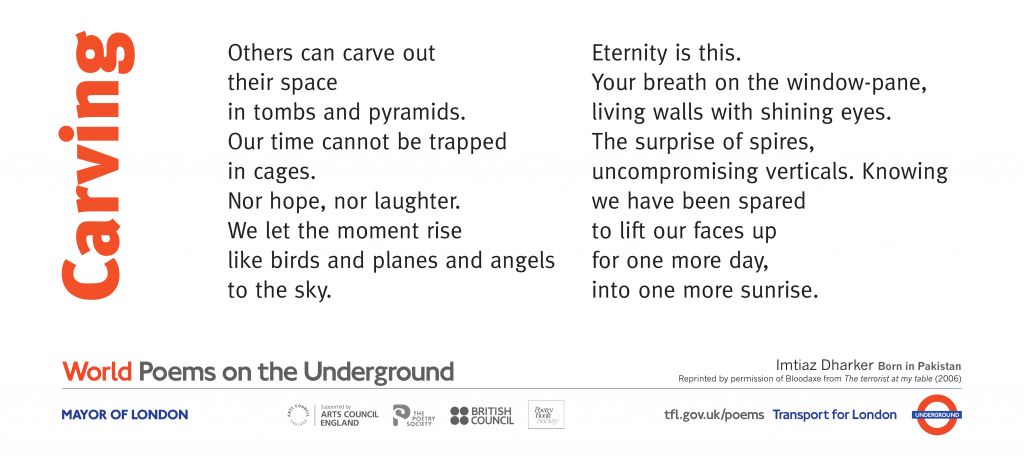
Imtiaz Dharker's Carving appeared on the Underground in 2012. Dharker, a former poet-in-residence at Cambridge University Library, is now part of the Poems on the Underground project. Credit: Poems on the Underground/TFL.
Imtiaz Dharker's Carving appeared on the Underground in 2012. Dharker, a former poet-in-residence at Cambridge University Library, is now part of the Poems on the Underground project. Credit: Poems on the Underground/TFL.
The text in this work is licensed under a Creative Commons Attribution-NonCommercial-ShareAlike 4.0 International License

